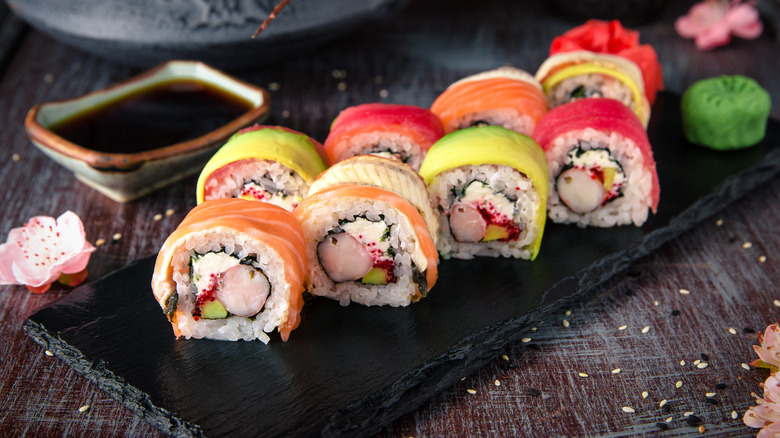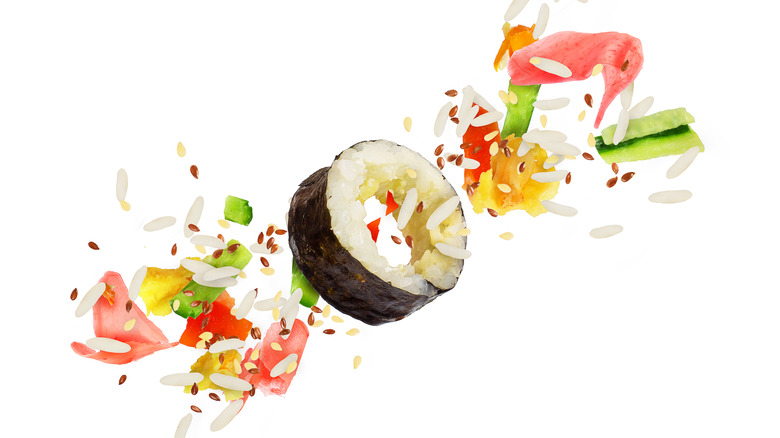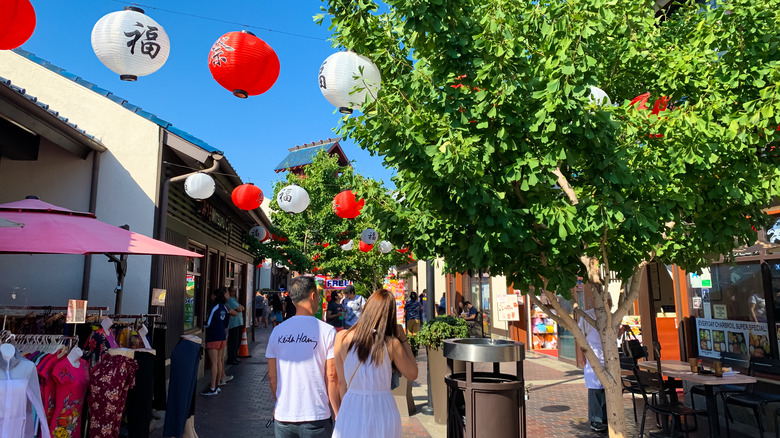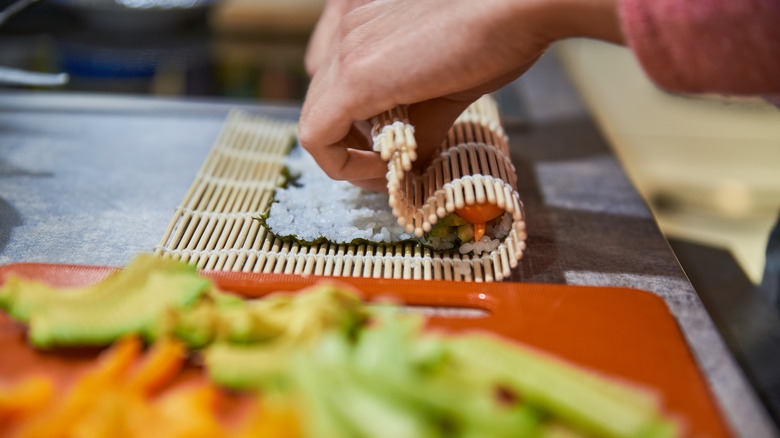Rainbow Roll: What You Should Know Before Ordering
Whether you like sushi raw, fried, in a roll, or chopped, eating it brings an experience. The firm and perfectly tempered cold fish offers a unique and powerhouse flavor when paired with one of its many ingredients, like seaweed, sauce, rice, and avocado. One sushi dish is almost too pretty to eat and a bit more complicated than the usual, according to International Cuisine.
The rainbow roll is a gorgeous sushi roll with colors that bring it to life. International Cuisine says that it is very similar to the incredibly popular California roll, with the middle being filled with the same things, namely avocado, cucumber, and imitation crab meat. If it is so similar to a California roll, what makes it so special? Well, the perfectly layered fish on the top would be why.
The flavor combination of the inside paired with the layered fish on top makes it one of the most popular sushi dishes, according to Instructables Cooking. Let's get into the gritty details of this photo-perfect roll.
What are the ingredients of a rainbow roll?
The rainbow roll, also known as a maki roll, is topped with colorful raw fish, giving it that Instagram photo-worthy appeal. While some recipes can vary a bit, the usual fish used are salmon, tuna, sea bass, or another whitefish (via Yamamori). The different colored fish and bright green avocado are what top the dish, giving it that rainbow effect.
The usual ingredients are rice, nori, avocado, and cucumber, similar to the California roll. One thing that makes this sushi stand out is the fact that it is inside out. The rice is on the outside of the nori, rather than the inside (via Tasteatlas). The base of the roll is assembled and then filled with the sliced pieces of avocado, cucumber, and crab.
The magic happens when the thin, precise slices of fish and avocado are topped in a pattern of different colors. One by one, they are placed without the same color next to one another and then garnished with soy sauce, masago, or wasabi mayonnaise (via Yamamori).
Where did the rainbow roll originate from?
Sushi is one of the most popular dishes worldwide and was originally traced all the way back to China. Roka Akor says that after World War II, the sushi boom in the U.S. was prominent, and middle-class families began eating it regularly. By the 1960s, sushi had become a trendy dish.
The rainbow roll, specifically, is a Japanese-American creation that originates from Little Tokyo in Los Angeles (via Mental Floss). It was one of the first of its kind to be inside out, with the nori being on the inside. Mental Floss says that the sushi boom in L.A. led to chefs opening up sushi spots throughout the U.S.
The rainbow roll became a huge success after the well-known California roll, and both have since stayed popular sushi dishes. You can find the rainbow roll on just about any sushi menu in any city you may visit. The rainbow roll is just one of many Japanese-American creations, with Philadelphia rolls being another (via Mental Floss).
How to make this dish at home
If you are in the mood to cook, you can give these delectable rolls a try in your own kitchen. You could even use saran plastic wrap in replace of a sushi roller (via International Cuisine). The hardest part of making this dish is simply having everything you need. Make sure you have all your fishes, the correct sushi rice, and, of course, the nori.
Once you have prepared your filling by thinly slicing the veggies and crab, you can lay out your nori and place a thin layer of sushi rice on top. Make sure you flip the nori so it has the unique inside out effect (via Sushi Encyclopedia). After you have the roll shaped, you can then begin giving it the rainbow layers of fish and avocado.
You can top with your favorite sushi sauces and sesame seeds, and voila, you just made a popular sushi cuisine in the comfort of your own home. Instructables Cooking gives a step-by-step guide on how to make rainbow rolls.



